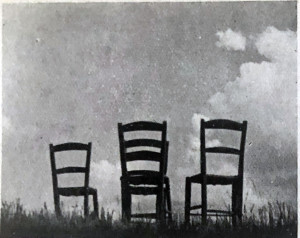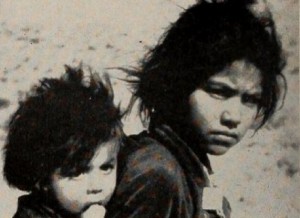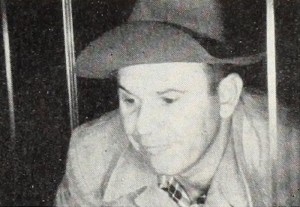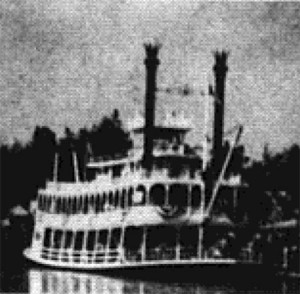"A puppet animation telling the story of Little Mutz, who, after his morning exercises, sets out in his sports car, leaving behind his father who is only interested in his newspaper and their black manservant who plays the banjo and dances. The car falls into a ravine but Mutz, unhurt, tackles the crocodile which then approaches, running it through with his sword. An ape-like, smoke-breathing monster - Nasobem - appears and after dispatching it in a like manner, Mutz returns home. In the next adventure, Mutz rockets into space and lands on Planet X. He finds he is the same size as Annett a porcelain model dancer. At midnight she comes alive and dances to his delight but falls from the shelf and shatters on the floor and Mutz walks off dejected." (EAFA Database)

doc. scientifico/scientific documentary

"In Dineh, Henry E. Hird. whose broad sympathies have brought his talents to bear upon so many unselfish projects, has taken up an effective cudgel in behalf of the Navajo Indians in the United States. Dineh, "The People," is the Navajo word for their tribe. Mr. Hird went to the Navajo country with the simple purpose of making a record film of that proud and self reliant Indian people. From what he saw there and from his conversations with many Indian citizens, he became convinced that now, if ever, the Navajos need understanding and practical aid. His film, therefore, not only accomplishes his primary aim — of recording an interesting racial group — but, in scenes and particularly in narrative, it pleads the economic and social case of the Navajos. Mr. Hird's cinematography is of very high order, as is usual in his films. His continuity is intelligent and interesting, and his narrative is a fine plea for a worthy segment of the citizenship of the United States." Movie Makers, Dec. 1947, 514.
"Sid gets eaten by a Tyrannosaurus Rex." UCLA Film & Television Archive.

"Cal Duncan, the exuberant extrovert of Lee's Summit, Mo., has, in The Director, turned his high talents for low comedy on our own hobby of amateur movies. Both the hobby and the hobbyist's long suffering friends take quite a beating. In the person of Felix Fogbound, a perennial bird-brain in the producer's cinematic studio, Mr. Duncan combines all of the classic amateur idiocies with a flavoring of Hollywood hokum. His lampooning of personal movies is robust, rowdy and for keeps. When Fogbound swoops his camera in a dizzy pan shot, you have really had it. When he attacks editing with a pot of glue and his thumb-and-forefinger splicing technique, every movie maker will wince with horror. The director is a derisive and delightful burlesque, executed with an almost artless technical competence." Movie Makers, Dec. 1950, 468.
"This film had a strikingly unusual theme and one which was slow to grow upon the spectators. But grow it did, and had the cinematographer-director been able to lavish a bit more attention on the pictorial attractiveness of some of his shots, and had he, as producer, clarified his plot with a few more titles, the film might well have been a winner. It is, however, a notable production, for seldom if ever before has an amateur filmer attempted to put on the screen so unusual a story." American Cinematographer, Feb. 1938, 76.
"There are many things at Disneyland for the filmer and, of course, these must be filmed as they are. It is not every filmer who makes an interesting motion picture of a portion of this holiday land. Binekorb takes us on the water excursion and through the "back country and jungle." A picture to be enjoyed by all. The film was returned to the maker before a frame enlargement could be made" PSA Journal, Nov. 1960, 41.

"A trip through the famed land of fantasy in Southern California, done for the enjoyment of old and young alike. We tour the Mississippi on the showboat, glide through the jungles with their wild inhabitants, penetrate the ocean depths on board an "atomic" submarine, and enjoy all the fascinating experiences in this land of make-believe. Unusual camera angles and freshness of approach in sound and picture give new meaning to this oft photographed subject" PSA Journal, Oct. 1963, 40.
Total Pages: 299